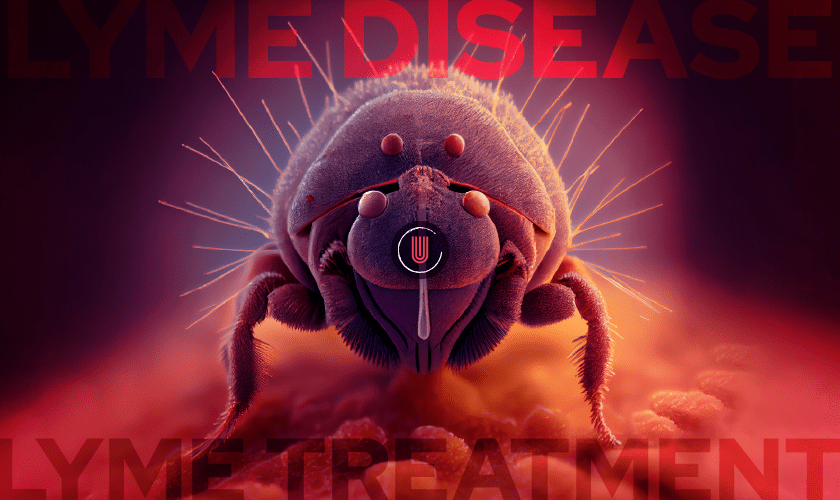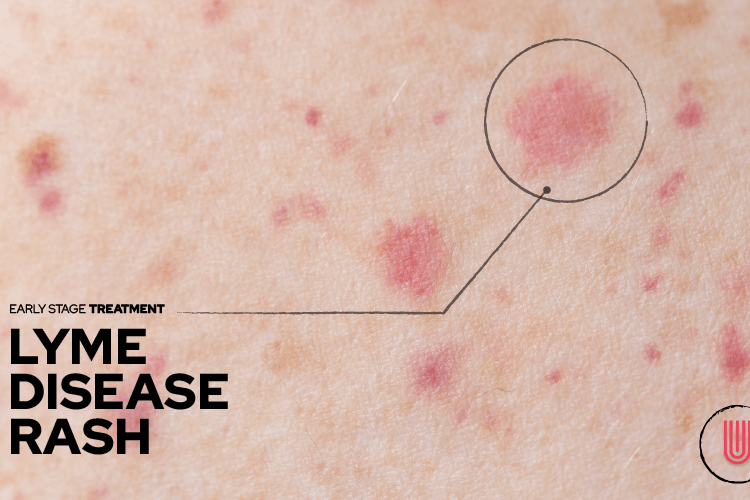
Lyme disease is a bacterial infection spread to humans by biting infected black-legged ticks. The disease was first identified in the town of Lyme, Connecticut, in 1975.
Lyme disease is one of the most common vector-borne diseases in the United States, and its incidence has been steadily increasing over the past few decades. In this blog post, we will explore Lyme disease, its transmission, its symptoms, and the treatment options available to those infected.
What is Lyme Disease?
Lyme disease is caused by the bacterium Borrelia burgdorferi and is transmitted to humans through the bite of infected black-legged ticks. The black-legged tick is commonly known as the deer tick and is found in wooded, grassy areas and in suburban and urban environments. Lyme disease can affect people of all ages and is commonly found in states such as Arizona, with a high population of deer, the primary host of black-legged ticks.
Symptoms of Lyme Disease
The symptoms of Lyme disease can vary depending on the stage of the infection, but some common symptoms include the following:
- Fatigue
- Chills and fever
- Weight loss
- Headache
- Muscle and joint aches
- Swollen lymph nodes
- Erythema migrans (also called a bulls-eye rash that appears around the eyes)
In later stages of the disease, more serious symptoms can develop, such as:
- Neurological symptoms (such as Bell’s palsy, which causes temporary facial paralysis)
- Heart problems (such as Lyme carditis, which affects the heart rhythm)
- Arthritis
- Chronic back pain
- Cognitive impairment
- Sleep disturbances
It is important to note that some people with Lyme disease may not experience any symptoms or may be so mild that they are mistaken for another condition. In some cases can take several weeks or even months for symptoms to develop after a person is infected.
Diagnosing Lyme Disease
Lyme disease can be challenging to diagnose, as its symptoms can mimic those of other illnesses, and its cause is often not immediately obvious. However, early diagnosis and treatment of Lyme disease are important to prevent serious and long-lasting health problems.
The first step in diagnosing Lyme disease is to provide your healthcare provider with a complete medical history, including information about your symptoms, any recent tick bites, and any outdoor activities or travel to areas where Lyme disease is prevalent.
Diagnostic Tests for Lyme Disease
The following diagnostic tests may be used to diagnose Lyme disease:
- Blood Tests: Blood tests can detect antibodies produced by the body in response to a Lyme disease infection. However, it can take several weeks for these antibodies to show up in the blood, so a negative result does not necessarily rule out the possibility of Lyme disease.
- Polymerase Chain Reaction (PCR) Test: The PCR test can detect DNA from the Lyme disease-causing bacterium in a sample of blood, cerebrospinal fluid, or tissue.
- Skin Biopsy: In some cases, a skin biopsy may be performed to examine the tissue around a tick bite for evidence of Lyme disease.
Diagnosis of Lyme disease can be difficult, and a combination of clinical examination, medical history, and diagnostic tests are often needed to make a definitive diagnosis.
It is important to note that prompt treatment of Lyme disease is crucial for preventing serious and long-lasting health problems.
Lyme Disease Treatment
If caught early, Lyme disease can be effectively treated with antibiotics. The choice of antibiotics will depend on the disease stage and the symptoms the patient is experiencing. Commonly used antibiotics for early-stage Lyme disease include doxycycline, amoxicillin, and cefuroxime. Intravenous antibiotics may be necessary if the disease has progressed to later stages.
Some people with Lyme disease may experience persistent symptoms even after receiving antibiotic treatment – this is known as post-treatment Lyme disease syndrome (PTLDS) and is believed to be due to lingering damage to tissues and the immune system caused by the bacterium. For those with PTLDS, treatment options may include physical therapy, cognitive behavioral therapy, and pain management.
Prevention of Lyme Disease
The best way to prevent Lyme disease is to avoid being bitten by black-legged ticks. When spending time outdoors, it is important to wear long pants and long sleeves and use insect repellent. It is also helpful to stay on cleared trails and avoid tall grass and leaf litter, as ticks are more commonly found in these areas. Additionally, checking yourself, your children, and your pets for ticks after spending time outdoors is important, as ticks can be very small and may not be immediately noticeable. Tick bites are not usually itchy. Many people who a tick has bitten may not even realize it because the bite is often painless and does not cause noticeable symptoms.
It is also a good idea to learn what ticks look like and what to do if you find one attached to your skin. In general, if you find a tick attached to your skin, removing it as soon as possible is important to reduce the risk of infection. The easiest way to remove a tick is to use fine-tipped tweezers to grasp it as close to the skin as possible and gently pull it straight out.
Tick vs. Mosquito Bite: How to Tell the Difference
Ticks and mosquitoes are common outdoor pests that can cause skin irritation and carry diseases. However, there are key differences between their bites, and it is important to know how to tell the difference.
- Mosquito Bites: Mosquito bites typically appear as small, red, raised welts on the skin. They can be itchy and cause mild discomfort but are generally not painful. Mosquito bites are often found in exposed skin areas, such as the arms and legs.
- Tick Bites: Tick bites are often painless and may go unnoticed. However, if you find a tick attached to your skin, it will appear as a small, dark spot. Ticks can embed themselves deeply into the skin and can be difficult to remove. If a tick has been attached to your skin for more than 24 hours, it is important to seek medical attention as the risk of Lyme disease and other tick-borne illnesses increases with longer attachment time.
Finding Lyme Disease Doctors in Your Area
Suppose you believe you may have been bitten by a tick and are experiencing Lyme disease symptoms. In that case, it is important to find a qualified healthcare provider knowledgeable about this complex condition. Here are some tips for finding Lyme disease doctors in your area:
- Ask for recommendations: Speak with friends, family members, or other healthcare providers for recommendations on Lyme disease specialists.
- Check online directories: Many websites, such as the International Lyme and Associated Diseases Society (ILADS), offer online directories of healthcare providers who specialize in Lyme disease treatment.
- Check with local hospitals: Contact local hospitals and ask for a referral to a Lyme disease specialist.
- Search for Lyme disease doctors in your area: Utilize search engines like Google to search for “Lyme disease specialist near me,” “how to find Lyme disease doctors in my area?” or “Lyme disease treatment Arizona.”
- Look for a provider knowledgeable about Lyme disease: Make sure the healthcare provider you choose has experience treating Lyme disease and is knowledgeable about the latest treatment options and research.
It is important to remember that not all healthcare providers are knowledgeable about Lyme disease, and finding a qualified specialist is essential for effective treatment. If you have difficulty finding a Lyme disease specialist, consider reaching out to organizations like ILADS for further support and guidance.
Urbane Medical: Providing Quality Care in Lyme Disease Treatment
Urbane Medical aims to provide compassionate and comprehensive medical care to those in need. As a leading provider of medical services in the Arizona area, we understand the importance of timely and effective treatment for Lyme disease. We are dedicated to helping our patients achieve the best possible outcome and regain their health.
We offer a full range of diagnostic and treatment services for Lyme disease. Our team works closely with each patient to create an individualized treatment plan that considers their unique needs and health status.
At Urbane Medical, we understand that Lyme disease can be a difficult and stressful condition to deal with, and that is why we are here to support our patients every step of the way. Whether you are seeking a Lyme disease test, advice on how to prevent tick bites, or need a specialist for Lyme disease, we are here to help.
If you live in the Arizona area and are concerned about Lyme disease, the team at Urbane Medical is here to help. We are committed to providing the highest quality medical care, support, and resources to help our patients overcome this condition and regain their health. Contact us today to schedule a consultation and learn more about how we can help you.

